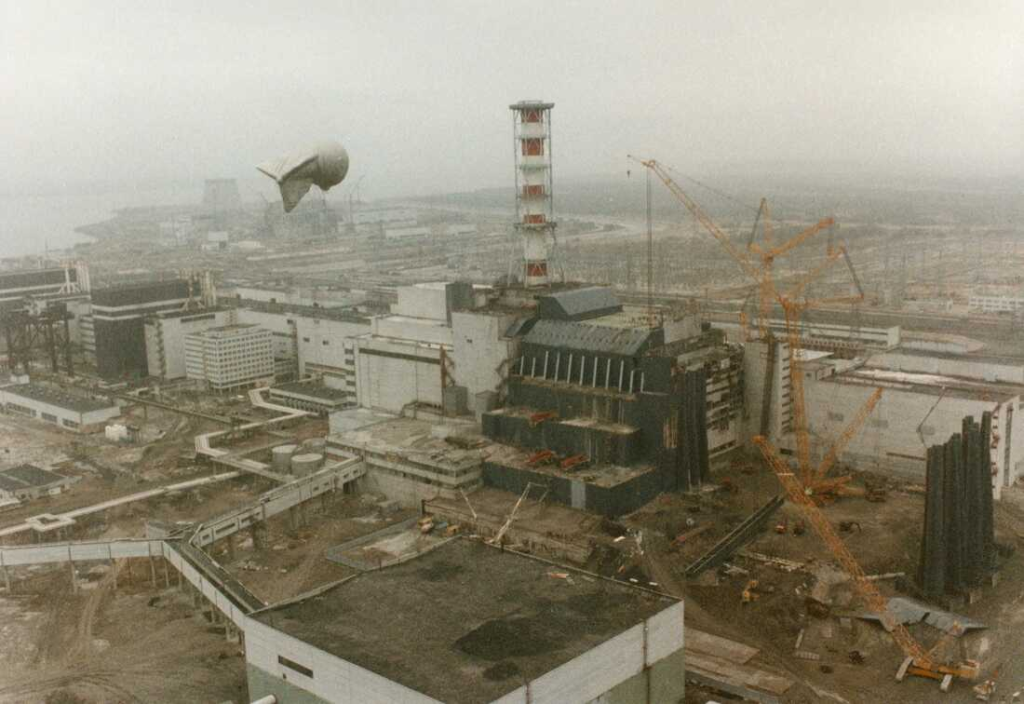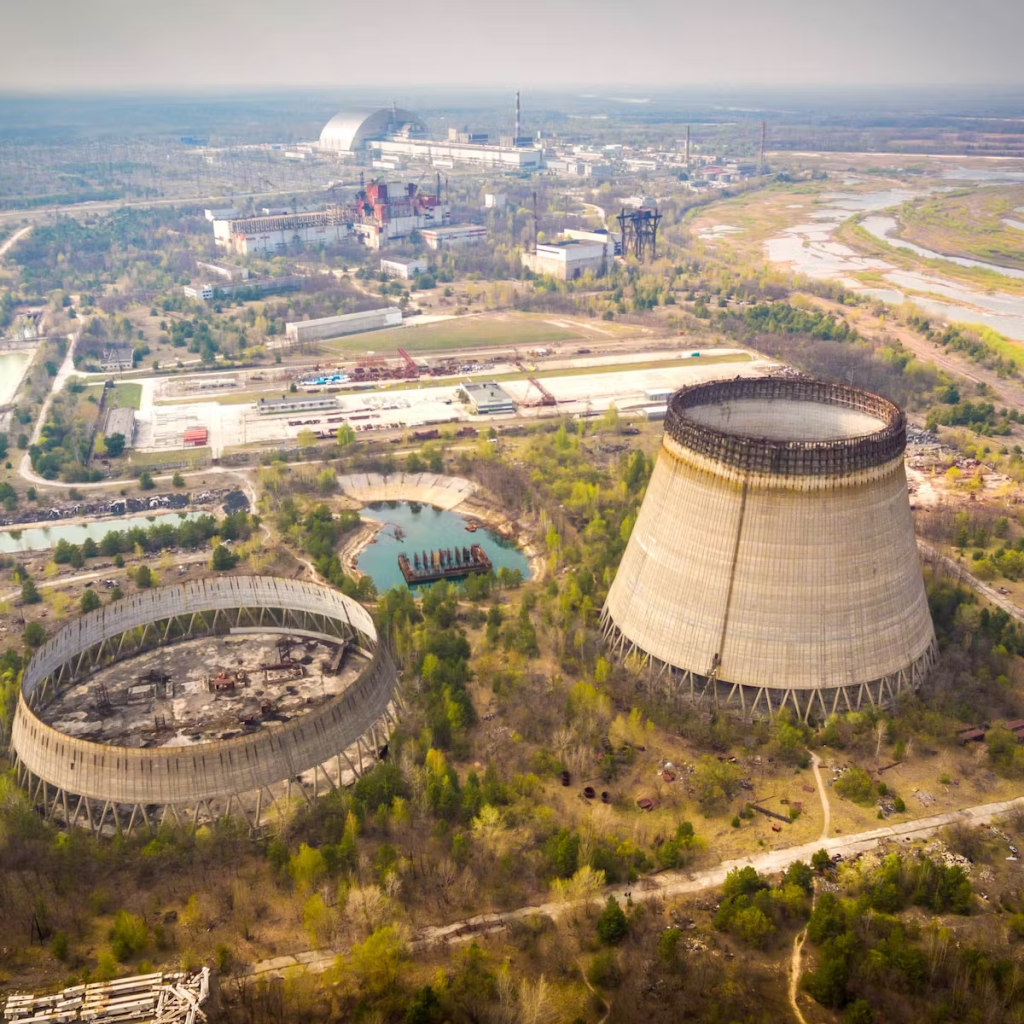The Chernobyl disaster was a nuclear accident that occurred on 26th April 1986 at the No.4 reactor in the Chernobyl Nuclear power plant, near the city of Pripyat in the North of the Ukrainian SSR in the Soviet Union. This was the world’s worst-ever civil nuclear accident. It is one of only two nuclear energy accidents rated at a seven. The maximum severity on the International Nuclear Great Scale, the other being the 2011 Fukushima nuclear disaster in Japan.

The accident destroyed the Chernobyl 4 reactor, killing 30 operators and firemen within three months and several further deaths later. One person was killed instantly and the second died in hospital soon after as a result of injuries received. Another person is reported to have died at the time from coronary thrombosis. Acute Radiation Syndrome (ARS) was originally diagnosed in 237 people on-site and involved with the clean-up and it was confirmed in 134 cases.
Of these, 20 people died as a result of ARS within a few weeks of the accident. Nineteen more workers subsequently died between 1984 and 2004, but their deaths cannot be attributed to radiation exposure. Nobody off-site suffered acute radiation effects. Although a significant, but uncertain, fraction of the thyroid cancers diagnosed since the accidents in patients who were children at the time are likely to be due to intake of radiative iodine fallout.
Impact of the Chernobyl explosion.
The meltdown and explosions ruptured the reactive core and destroyed the reactor building. This was immediately followed by an open-air reactive core fire which lasted until 4th May 1986, during which carbon radioactive contaminants were released and deposited onto the parts of the USSR and Europe. Approximately 70% landed in Byelorussia (now Belarus), 16 kilometres away. The fire released about the same amount of radioactive material in the initial explosion.
In response to the initial accident, a 10 kilometres radius exclusion zone was created 36 hours after the accident, from which approximately 49,000 people were evacuated, primarily from Pripyat. The exclusion zone was later increased to a radius of 30 kilometres, from which additional 68,000 people were evacuated.
Following the disaster, Pripyat was abandoned and eventually replaced by the new purpose-built city of Slavutych. The Chernobyl Nuclear Power Plant sarcophagus was built in December 1986. It reduced the spread of radioactive contamination from the wreckage and protected it from weathering.
Environmental impacts of the Chernobyl accident.
The Chernobyl Nuclear Power Plant is located next to the Pripyat River, which feeds into the Dnieper reservoir system, one of the largest surface water systems in Europe, which at the time, supplied water to Kyiv’s 2.4 million residents, and was still in spring flood when the accident occurred. The radioactive contamination of aquatic systems was in order, therefore, because it was a major problem in the immediate aftermath of the accident.

The levels of radionuclides in drinking water caused concern during the weeks and months after the accident. The water was later reported to be safe for consumption.
Groundwater was not badly affected by the accident since radionuclides with short half-lives decayed away long before they could affect groundwater supplies and longer-lived radionuclides were adsorbed to surface soils before they could transfer to groundwater.
Also Read: Legends Of the Mysterious Bermuda Triangle.
Bio-accumulation of radioactivity in fish resulted in concentrations (both in Western Europe and the former Soviet Union) that in many cases were significantly above guideline maximum levels for consumption.
Flora and Fauna after the Chernobyl accident.
After the disaster, four square kilometres of pine directly downward of the reactor turned reddish-brown and died, earning the name of the ‘Red Forest ‘. Some animals in the worst-hit areas also died or stopped reproducing.
Most domestic animals were removed from the exclusion zone, but horses left on an island in the Pripyat River 6 kilometres from the power plant died when thyroid glands were destroyed by radiation doses of 150-200 Gray. Some cattle on the same island and those that survived were stunted because of thyroid damage.

The mutation rates for plants and animals have increased by a factor of 20 because of radionuclides from Chernobyl. There’s evidence for elevated mortality rates and increased rates of reproductive failure in contaminated areas, constituted with the expected frequency of deaths due to mutation.
On farms in the Narodych region of Ukraine, it is claimed that from 1986 to 1990, nearly 350 animals were born with gross deformities such as missing or extra limbs, missing eyes, heads or ribs, or deformed skulls; in comparison, only three abnormal births had been registered in the five years.
Read: Dramatizing the Chernobyl Disaster, for Its Survivors
The long-term impact of the Chernobyl disaster.
In the 10 years following the accident, 4 more people who had been initially hospitalised (who had been hospitalised with ARVS) died of various causes mostly unrelated to radiation exposure. Only two of these deaths were the result of myelodysplastic syndrome.
Childhood thyroid cancer became so common, with approximately 4,000 new incidents in the general population by 2002 within contaminated regions of Belarus, Russia and Ukraine, most of which are attributed to high environmental levels of radioactive iodine shortly after the accident.

The same report is also a commonly cited estimate for potential future cancer fatalities in the form of an increase in cancer mortality, which speculated that, at worst, 4,000 additional cancer-related fatalities were to be expected.







I was pretty pleased to discover this web site. I want to to thank you for your time for this fantastic read!! I definitely really liked every bit of it and I have you book marked to see new things on your web site.
You are welcome. Share the site link in your social media.
gates of olympus slot demo
kukhareva.com
Sportsbook
https://rent-a-car-alanya.com/pt-pt/
short4cams.com
You did not try to look in google.com?
_ _ _ _ _ _ _ _ _ _ _ _ _ _
Neculiti Ivan fox hosting
https://www.teensmov.com/
Do not pay attention!
——
raj bet app download
buy semaglutide in canada